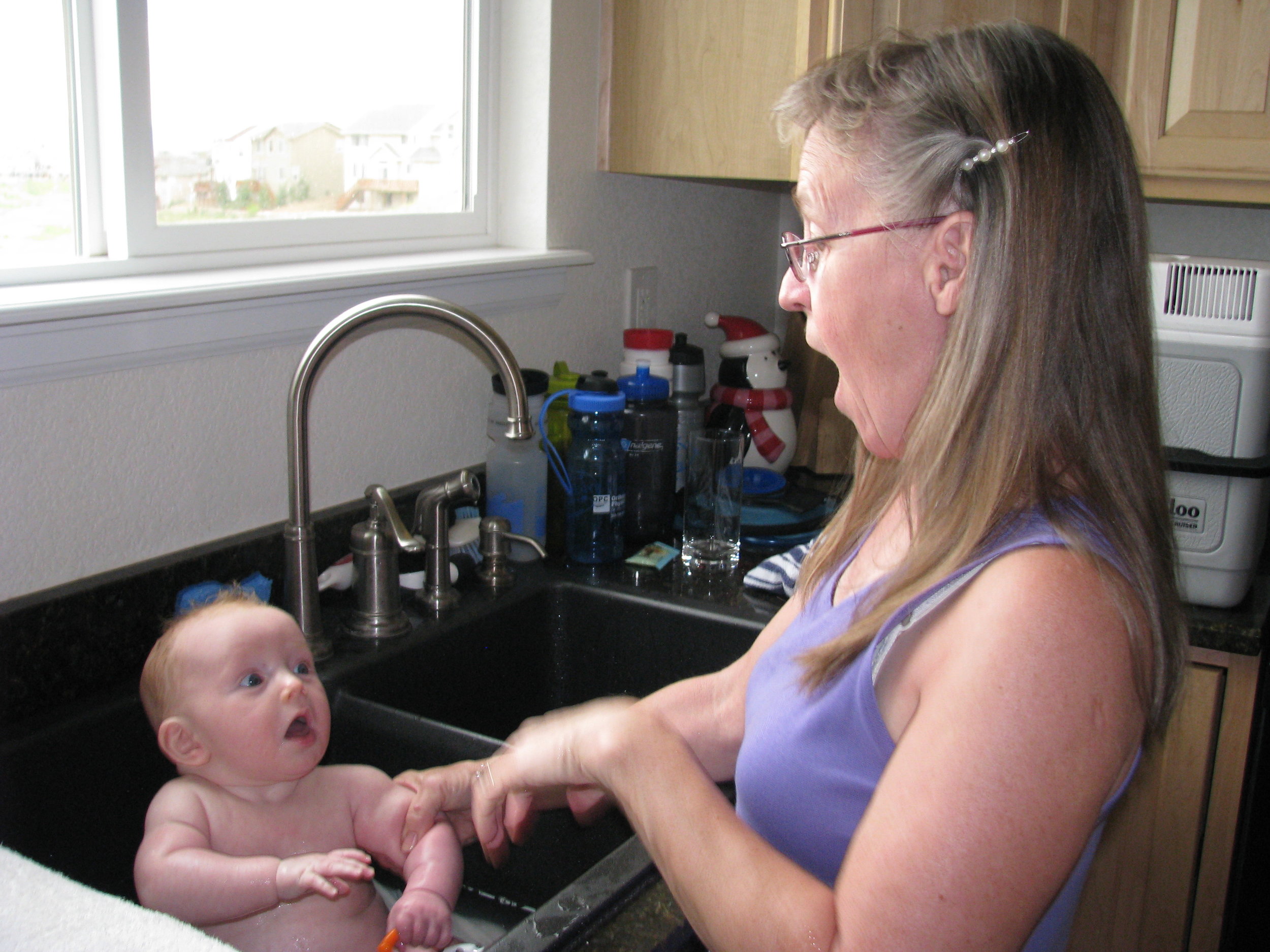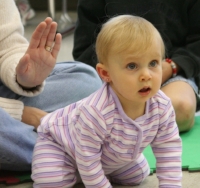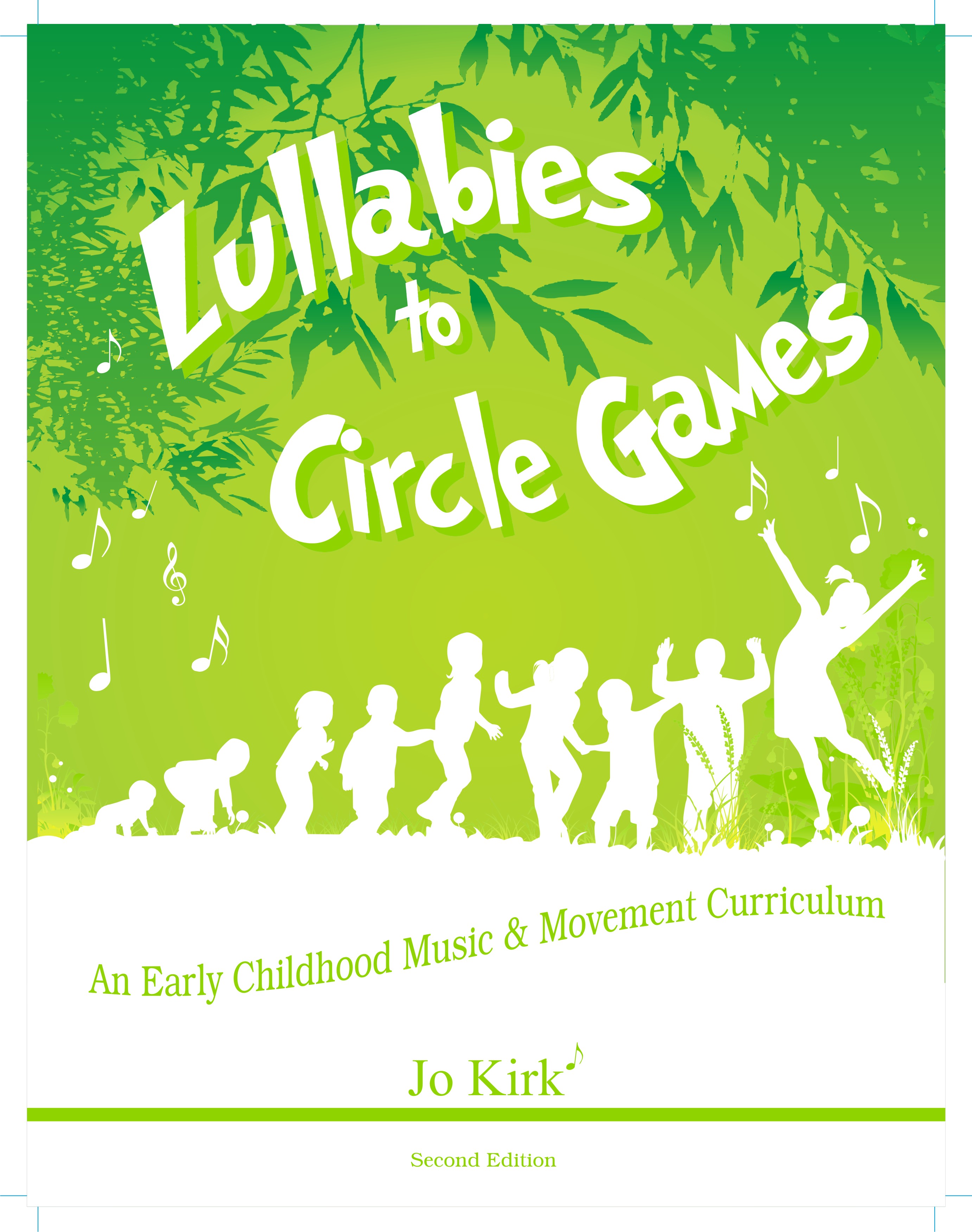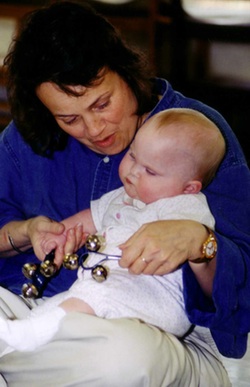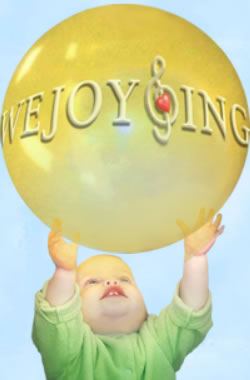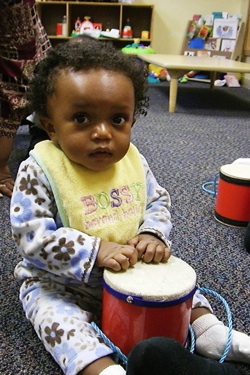What’s “ON Your Face” and “IN Your Voice” Makes a Difference in Your Child’s Development!
/Baby imitates facial expression!
Our babies learn about trust, relationships and the world through our playful interactions. They are quick to react to the parent’s playful voice, smiles, eye contact, and touch. Delightful interactions such as, using expressive language, smiling with eyes and lips, making sounds, looking where your child is pointing and joining in a “call and response” type of language are important to your child’s healthy development. Providing this sensory stimulation and interaction is vital to the child’s development. WeJoySing stives “to foster [this] adult-child interaction, therefore cultivating the artistry of parenting and strengthening the family unit.” (taken from WeJoySing’s Mission Statement.)
tHE joy OF SHARING FACIAL AND VOCAL EXPRESSIONS
This is never more evident than in a study conducted by Dr. Edward Tronick of Harvard University called the Still Face Mother Experience. “Babies, this young, are extremely responsive to the emotions, reactivity and social interaction that they get from the world around them.” Dr. Edward Tronick. The experiment instructed the mother to play and interact with her child as normal. When given a cue, she is to turn away from the child. When she turns back to face the child, she is to keep her face completely still and not respond to her baby. The baby very quickly picks up on this change. The child smiles, points, vocalizes, uses hand movements and playful gestures to get the mother back. Signs of frustration, irritation, crying and meltdown begin when the child is unable to engage the mother. It is a joyous reunion when the mother receives a signal to resume normal interaction with the child. The baby settles back into the comfort zone and joyful play she and mother have developed.
dADDY’S LOOKING…i BETTER LOOK TOO!!
The same reactions and outcomes were discovered when Project ABC at the Children’s Institute performed the experiment with fathers. “What we have learned over the years is babies are much more capable than we initially imagined but they’re also much more vulnerable.” Richard Cohen, Ph.D.
“We discovered how able the child is to initiate and be part of the relationship with the parent, and how much she depends on that healthy relationship in order to keep an even keel. And when she is grounded and comfortable, she can explore the world, try new things, and meet new people because there is a trust level there and she has that safe base she can always rely on." Dr. Richard Cohen.
It must also be noted that the voice and face to face experience is a crucial component. The mother and father were both physically present for the experiments, but their absence of facial expressions and vocal interaction caused the child distress. Whereas the expressive speaking and facial interactions were joyfully absorbed by the young child.
nOW THIS IS “EXPRESSIVE!”
Dr. John Feierabend, Ph.D., wrote, “If children experience expressive speaking, they will assimilate that skill. If children are read to in an expressive voice, they will later read aloud and to themselves with appropriate expression.” Music and Movement for Infants and Toddlers: Naturally Wonder-full.
We know that initial adult responsiveness from caretakers are keys to the baby’s success as a child and an adult which is why we include joyful Bounces, Wiggles and Tickle experiences in all of our WeJoySing classes from infant through 1 year old. We want to bring the mother or father face to face…joy to joy…with their child to build this healthy secure sense of relationship.
lET’S gO “bOUNCING” TOGETHER….eNJOY THE RIDE!!
BOUNCES:
Bouncing an infant or toddler provides an ideal experience of a steady beat over rhythmic speech for the very young child. These rhymes and songs often consist of delightful melodies and the young infant can experience the beat and the delight on the parent’s face as he/she share the experience together
WIGGLES:
Wiggling a young one’s fingers or toes from largest to smallest has inspired many rhymes that provide the child to experience the cadence of the rhyme while discovering that, “Hey! Those are MY TOES!!”
TICKLES:
Tickles begin in a baby’s palm or on a belly and work up the baby’s arm or body, ending in a gentle delightful little tickle. The anticipation of the tickle at the end is the greatest joy!
Bond with your little one with a few of our favorite Bounces, Wiggles and Tickles shared below.
The benefits to you and your child are far-reaching…and such fun!
*******************************************************************************************************
BOUNCES
Here we go up up up Lift baby over-head OR lay baby on floor
gently bring to seated position (support neck)
Here we go down down down Bring baby back to lap OR gently lower baby to lay back down
Here we go back and forth Rock baby forward and back OR with baby on floor,
gently rock side to side
And here we go round and round Roll baby’s arms or legs
Trot, trot to London, trot, trot to Dover Outstretched legs, child facing parent
Watch out baby, or you might fall over. At end, tip child to the left
Trot, trot to London, trot, trot to Dover Outstretched legs, child facing parent
Watch out baby, or you might fall over. At end, tip child to the right
Trot, trot to London, trot, trot to Dover Outstretched legs, child facing parent
Watch out baby, or you might fall over. At end, tip child backward
Trot, trot to Boston, trot, trot to Lynn, Outstretched legs, child facing parent
Watch out, baby, or you might fall in! At end, open legs and let child ‘fall’ gently to the floor
Increase tempo each time
WIGGLES
Big “A” Little “a” Place baby on outstretched legs facing adult
Open baby’s arms wide, bring together
And bouncing B, bouncing B Bounce baby on kne
Cat’s in the cupboard, Clap hands on “Cat’s” and “cup”….
And you can’t see me! Cover baby’s eyes or your own eye
Peek-a-boo! Play peek-a-boo
This Little Baby Rocked the Cradle Rock child’s arms side to side
This little baby jumped on the bed Jump your fingers in child’s palm
This little baby crawled on the carpet Crawl your fingers on child’s arm
This little baby bumped his head Tap child’s head gently
This little baby played hide and seek… Cover your eyes with both hands
Where’s my little baby? Peek and cover eyes again
Oh, oh, peek! Oh, oh, peek! Peek and give baby big HUG!
TICKLES
Creepy Creepy Little Mousie Slowly walk fingers up baby’s arm, leg or body
From the barnsey to the housie
Found some cheese and ate it upsie
Nibble, nibble, nibble, nibble. Nibble baby’s neck, chin, fingers, toes, etc.
Criss Cross Make large X on child’s back
Apple Sauce. Tape child’s shoulders twice
Spiders crawling up your spine! Walk fingers up child’s spine
Cool breeze, Blow lightly on child’s neck
Tight squeeze, Hug child
Now you’ve got the shivers! Tickle child
Joyfully Submitted,
Mrs. Kristi

